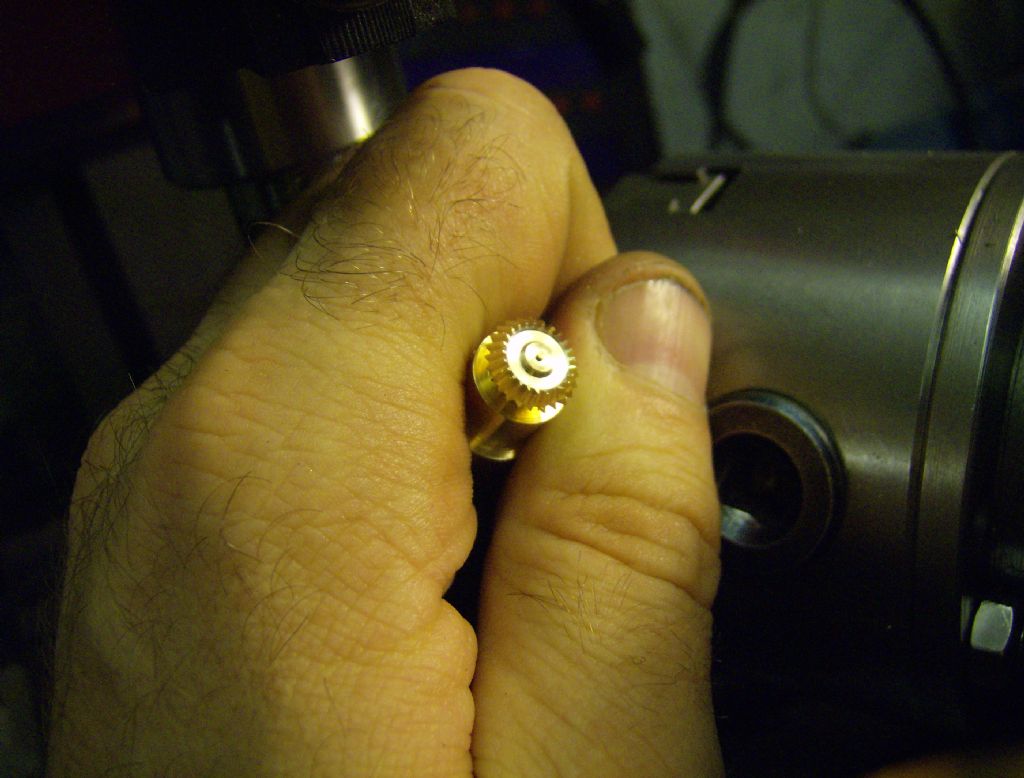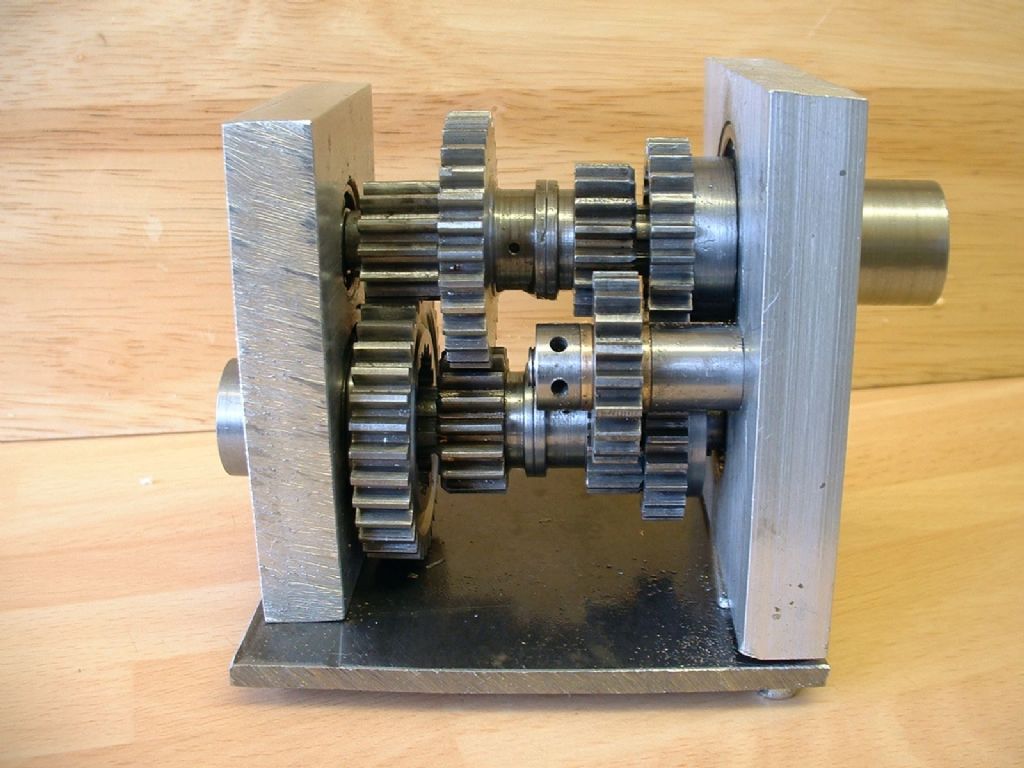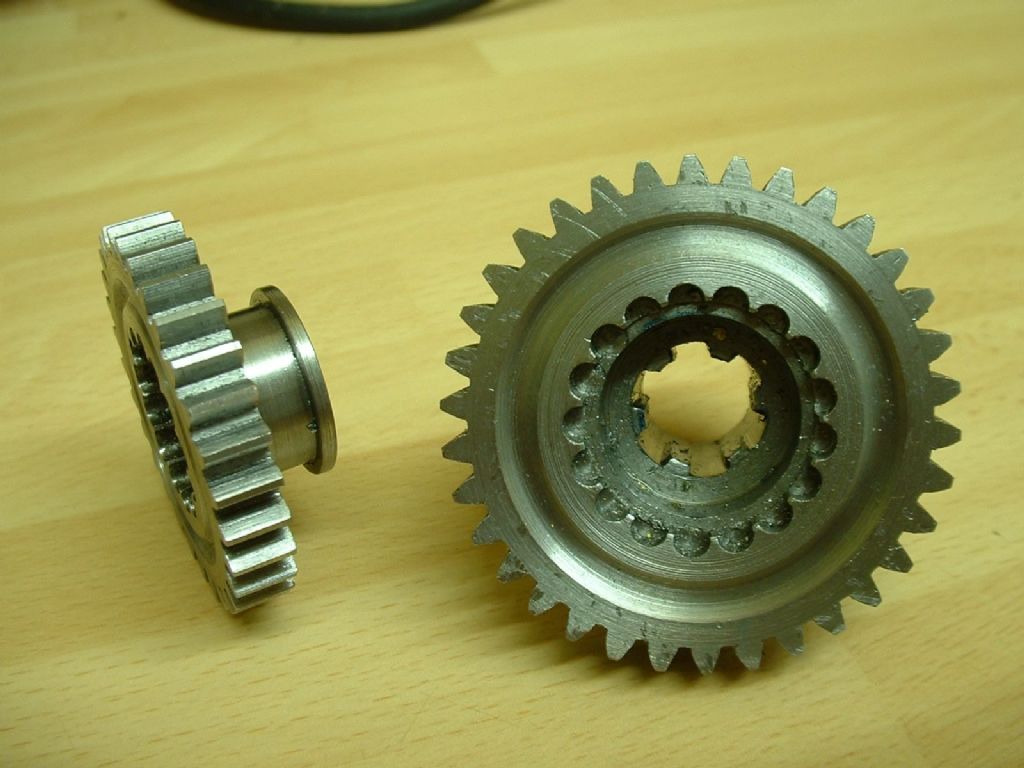robcas631
Well-Known Member
Excellent job!

Looks good.You beat me hands down in the competition
I think Gus meant $125...I hope so 'cause that's what I just paid for a set from the same vendor!!!
Gus, did you give the guys at CTC Tools some of your fresh fish for that discount??
Phil
Gus,
Not true. You've made gears, I haven't.
But you definitely got me going in the right direction. I kept putting gear making off because involute gear cutters in the US tend to run about $45 each, so a set of 8 = $360. But the CTC set of 8 = $125, so that's a good place to start learning how to make gears. Thanks for the tip to CTC Tools
Cheers,
Phil
Please post the very first good gear



![DreamPlan Home Design and Landscaping Software Free for Windows [PC Download]](https://m.media-amazon.com/images/I/51kvZH2dVLL._SL500_.jpg)

....I am still working out depth calculation. I am wondering tooth height equals O.D.--Pitch Diameter???.

Hey Gus, Below is a drawing showing the tooth proportions for Module System metric gears. (DP system inch gears have a different depth ie 2.157/DP)
The whole depth of tooth is 2.25 x m (The 0.25m is the extra depth at the bottom of the tooth space to give clearance for the teeth of the mating gear)
So, if m = 0.8 , then depth = 2.25 x 0.8 = 1.8mm (this gives 0.2mm extra depth for the clearance)
BUT be careful!! All of this assumes every dimension on the gear blank and cutter profile are PERFECT. And that includes concentricity to the bore.
If the cutter profile is correct, then the ONLY thing that really matters is the Pitch Diameter, because that determines the tooth thickness and the size of the gap between the teeth.
If you cut a whisker too deep, the teeth will be a bit thin, but the gear will still work ok, just a bit more backlash (you need a little anyway).
Keep having fun and posting, this is interesting.
Regards, RossG
radial1951
_____________
Having arrived home from a three week holiday to the inevitable pile of correspondence and other items to attend to I eventually came to the June project of the month news letter and spotted the Poor man's dividing head which took my attention.
Looking this up, I found Gus that you were again making your own version of one of my designs, last time I think the boring head. I must say the dividing head is looking good. For me, I get as much encouragement by someone adapting my designs to suit purpose, or to use available materials, as I do if someone follows my drawings exactly.
The thread is rather long so I have not found the time to study it in depth, but I did notice you commented that you would need to make a tailstock for making pinions. As I have not seen a picture of a tailstock I am not sure if you have made it. If not, then you may be interested in my method which I have used very successfully. I am not sure how to post a photograph so have added it to a blank page on my web site, here.
The only explanation needed is that the hole must be a close fit on the pinion blank and the slot on the side of the bar is made when cutting the first gear space.
To see the reason for me cutting pinions see here
If I may digress may I also mention my latest addition to my website. This is major update on my rather unconventional quick change lathe tool holders.
Harold Hall

HI Gus,
I made my worm & wheel in two stages. First cut two matching worm gears one to use and the other one couple of thou oversize and in silver steel (drill rod). Cut some teeth in the silver steel one and harden & temper it to make a cutter.
Using a thin cutter (maybe a slitting saw) rough out the teeth in the worm wheel blank, at the helix angle. Now mount the worm gear blank so it can rotate freely and feed it into the cutter you made. This will take more pressure than you expect because the teeth on the cutter aren't relieved.
Tip - use free cutting (leaded) brass for the worm wheel otherwise you can end up with an extra tooth (don't ask how I know this).
For ordinary gears I cut in one pass with the cutter working normally, and then run back in the climb milling direction which puts the polish on them.
I use home made single point cutters.
Neil

